Studio opened in the Copenhagen waterfront in October 2013. The restaurant is situated within a multi-restaurant complex called The Standard set up by Claus Meyer (who co-founded Noma). The head chef at Studio is Torsten Vildgaard, who trained at a restaurant called Tinggarden north of Copenhagen, and then at restaurants Norrebro Bryghus and Extra. However his formative years were spent in a lengthy eight-year stint at Noma where he worked as sous chef and head of research and development before he moved to Studio. In his new home he gained a Michelin star five months after opening.
Studio is one floor up in the Standard building. It has a pleasant view out on to the water and seats about 40 diners at any one time. There is, as is the current fashion, no choice of dishes other than two lengths of tasting menu. The seven course menu was priced at DKK 900 (£99) at lunch. There was a five-course menu available at DKK 750, and a nine course one at dinner only.
The wine list had around 200 labels in all, with bottles from Germany, Italy, Spain etc and a few from further afield as well as the usual selection from France; there are plans to broaden the list later in the year. The cheapest wine was a rather chunky DKK 450 (£49) and the priciest was the Krug Clos d'Ambonnay 1998 at DKK 16,000, actually slightly below its current market price of DKK 16,797. Example labels were JJ Prum Riesling Kabinett 2012 at DKK 500 compared to a retail price of DKK 184, Gaja Ca'Marcandi Magara 2011 at DKK 1,000 for a bottle that costs about DKK 305 in a shop, and Felton Road Cornish Point Pinot Noir 2014 at a hefty DKK 1,500 for a wine that will set you back around DKK 389 retail.
A series of nibbles began the meal. I really enjoyed a potato "chip" with salt and vinegar, the fried potato strands encasing smoked turbot, a little nod to fish and chips. The potato had excellent texture and was carefully seasoned, the fish lovely (17/20). A quail egg had a soft centre and came with a truffle emulsion and summer truffle, seasoned with hay salt. This was fine but was really just an egg, so tricky to score. Similarly a watermelon with a little salt was just a piece of fruit, and although it was pleasant was not of the standard that can be obtained in Japan. I find it difficult to really score a slice of fruit. The same could be said of the next nibble, a salty crystallised cheese called Havgus resting on a disc made from panko breadcrumbs. These were all very pleasant, but did not demonstrate much in the way of culinary ability. The next nibble was a bit more ambitious. A kind of pancake called aebleskiver is traditionally made as a sweet treat for children in this country. Here the kitchen produced a savoury version. This was offered with cheese cream topped with lumpfish roe and a little cress. The pancake was comforting and enjoyable, the spread working quite well (15/20).
Bread was made from scratch in the kitchen, an excellent sourdough and also a flat cracker made with malt and dark beer that was less thrilling to me, and for reasons that eluded me was presented in an envelope – nope, me neither. However the texture of the sourdough was lovely (17/20).
Hand-dived Norwegian scallops were served with fermented pea puree, grilled peas served in a pea husk, a sauce of parsley, pea husk, sorrel and dill and a garnish of elderflower and yoghurt snow. This pretty dish had lovely sweet scallops and good quality peas, the sauce complementing the shellfish nicely (17/20).
A flatfish called witch flounder (which in the UK is also called Torbay sole) was served partly on the bone as a cutlet, baked with onions and served with a sauce of beurre blanc and wild garlic. The fish was accurately cooked and the beurre blanc was excellent, with just the right level of acidity (16/20).
The following dish appeared to be a poached egg but was not quite what it seemed. An egg yolk slow cooked on hay was surrounded by an artificial "egg white" made from fermented milk skin. To complete the dish were small Danish new potatoes rolled in hay ash, a few snails, along with chickweed and cress and a sauce of whey and grass. This was pleasant enough and showed some clever technique, but was to me less interesting than the seafood dishes here (15/20).
This was followed by a langoustine from the Faroe Islands, cooked on one side and topped with edible flowers and elderflower paste, alongside a sauce made from the shell of the langoustine and gooseberries. The shellfish itself was excellent, sweet and lightly cooked, though I found the paste topping a bit distracting. It looked pretty but from a flavour viewpoint such a lovely core product did not need much in the way of extra elements (16/20).
The main course was sweetbread that had been fed and glazed and served with a reduced sauce of cooking juices and onion. This rich combination was nicely complemented by Danish green asparagus, grilled on one side and served with herbs and a little cream of wild garlic. The sauce was particularly impressive, deep and intense (17/20).
What passes for dessert in this part of the world was white asparagus ice cream infused with vanilla and tonka beans, with green strawberry and woodruff meringue. There were also green strawberries marinated with thyme, white asparagus cooked with vanilla and discs of pain d'epice. Finally there was strawberry jus flavoured with woodruff and thyme. This was all very pretty and technical, but for these part savoury, part sweet dishes to work they have to be pretty special, and I didn't really understand the logic of the flavour combinations here. The vanilla seemed to me to just clash with the earthy notes of the asparagus in a way that I didn't find very enjoyable (13/20).
Coffee was unusual, in that there was no espresso machine. Instead a small trolley was wheeled out in which was a syphon filter coffee maker. This is designed for the coffee to be more evenly filtered than a regular funnel filter. The coffee used was a medium roast Kenyan arabica supplied by a company called Coffee Collective, who seem to be favoured by many of the high end Copenhagen restaurants. Certainly the coffee was very good indeed, with nice acidity and gentle yet quite rich flavour. It came with a few petit fours. A madeleine looked conventional but was made using chicken skin fat, and there was also rhubarb and rose jam and vanilla cream. There was also edible rhubarb as a sheet stuck on a frame printed with rhubarb trivia (this seemed a bit contrived to me, with somewhat artificial texture and not much flavour), and a meringue of rhubarb and roses coated with chocolate on a base of biscuit and ground cheese, which was better.
Service was excellent, the dishes delivered to the table by the chefs, who were very patient about my food geeky questions. I just had water to drink and the bill came to DKK 1,010 (£111) before tip. If you shared a modest bottle of wine then a typical cost per head would be about £150. This is hardly a bargain, though of course it is Scandinavia, where nothing is exactly cheap. There were certainly very good ingredients, such as the excellent shellfish, and plenty of technical skill on display. Flavour combinations were generally logical enough, though it was to reconcile the real simplicity of some of the nibbles with the quite elaborate techniques used in other dishes. However, overall Studio was certainly a pleasant and relaxed experience.


























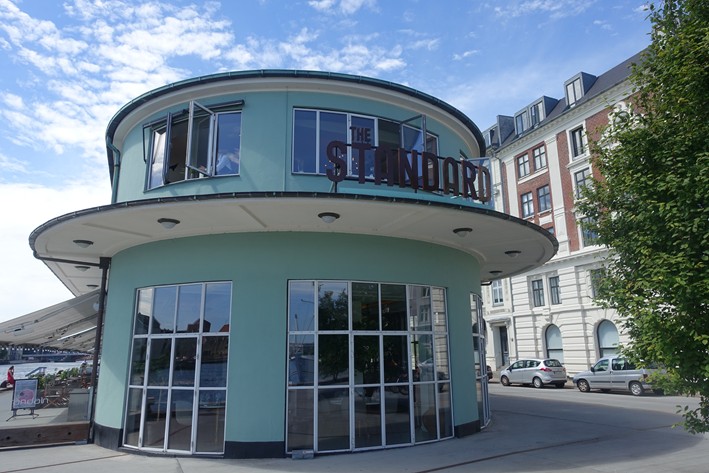

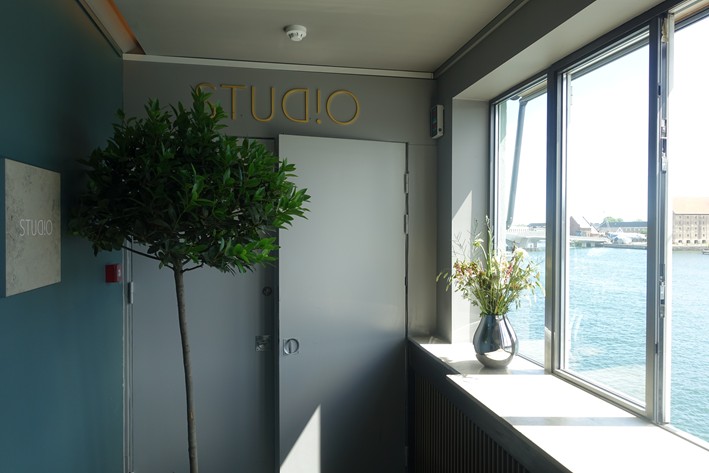

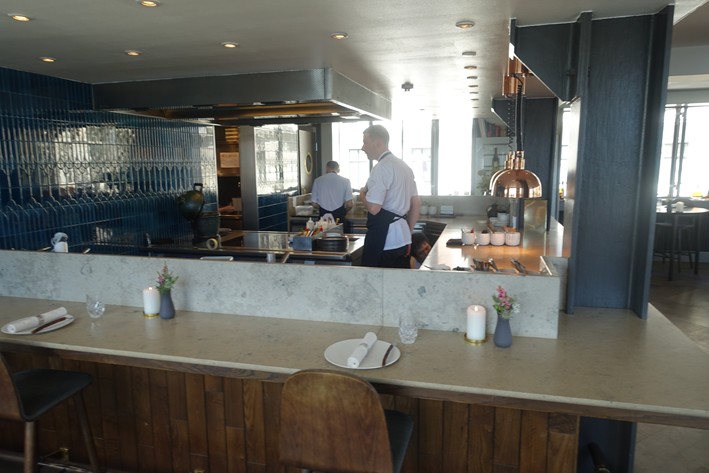

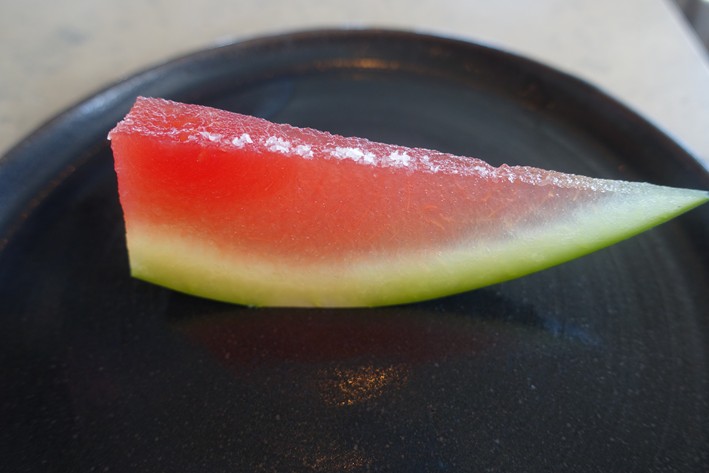

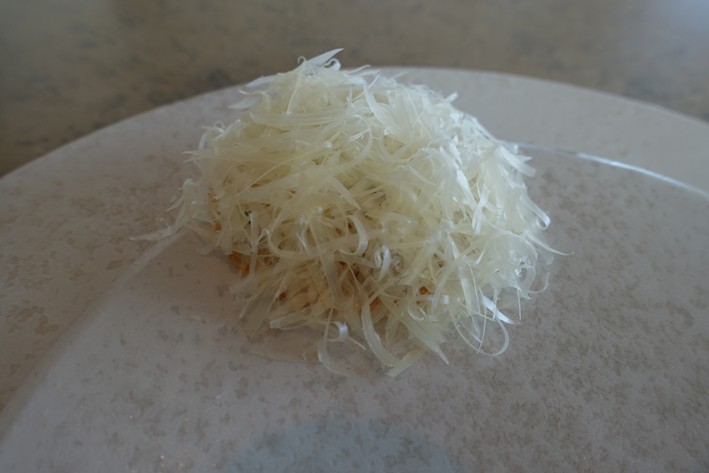
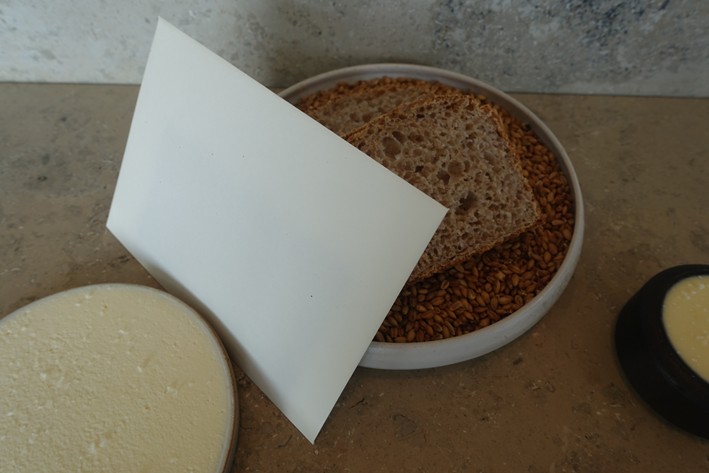
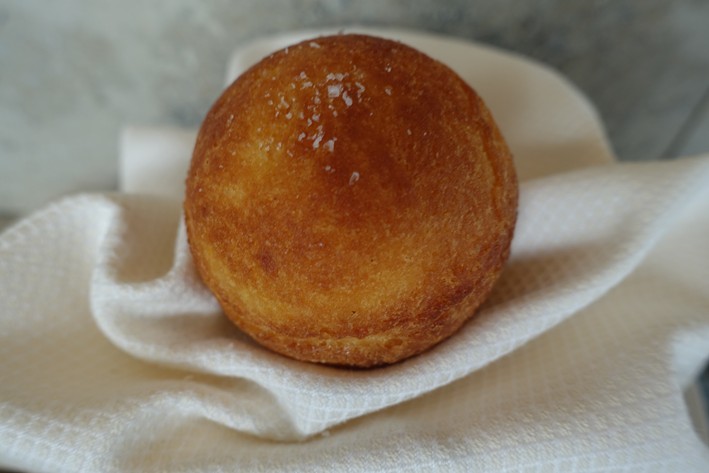
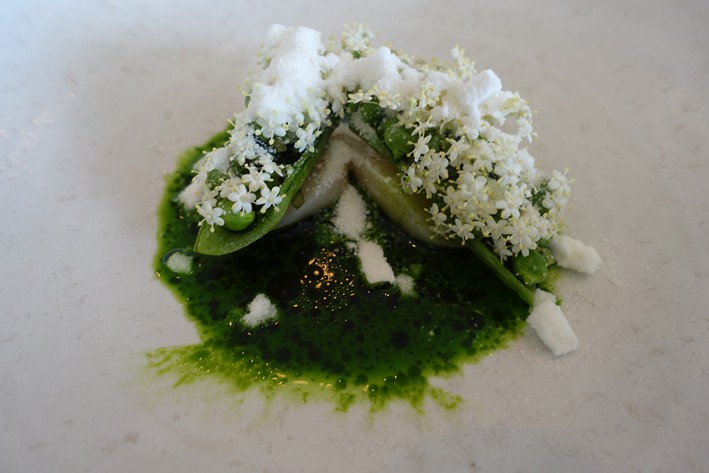
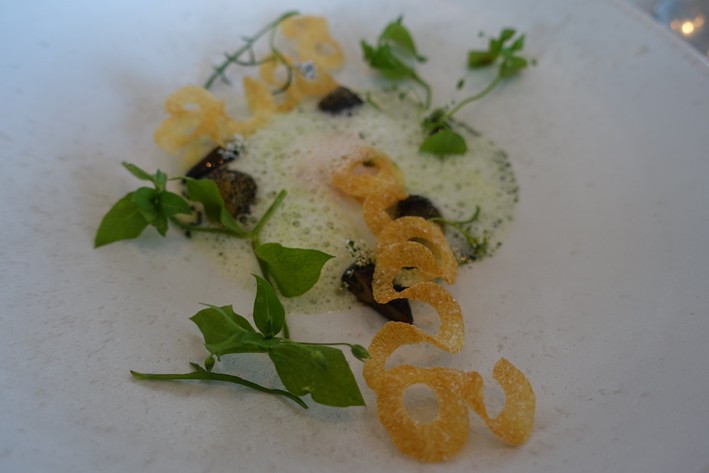
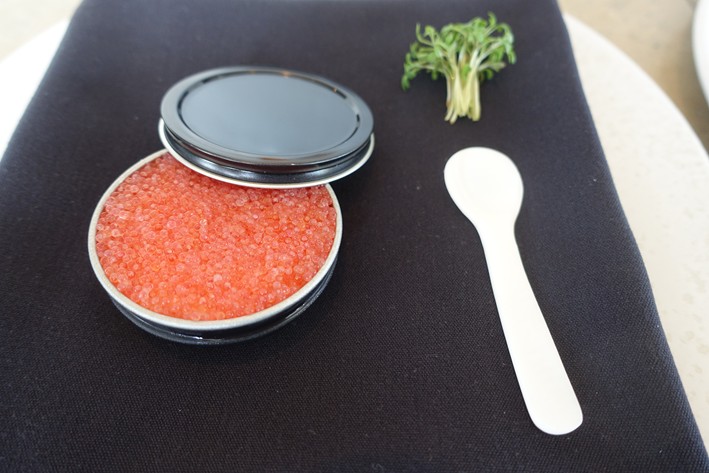
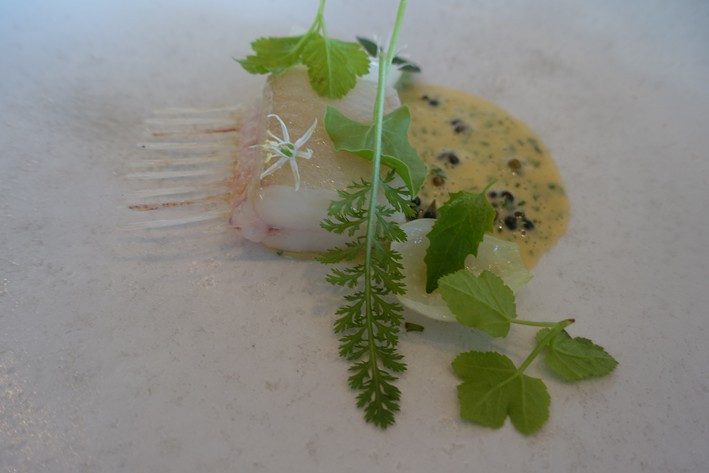
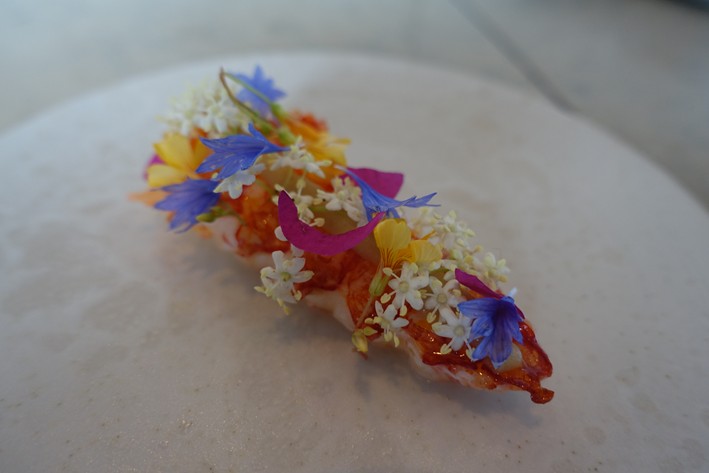

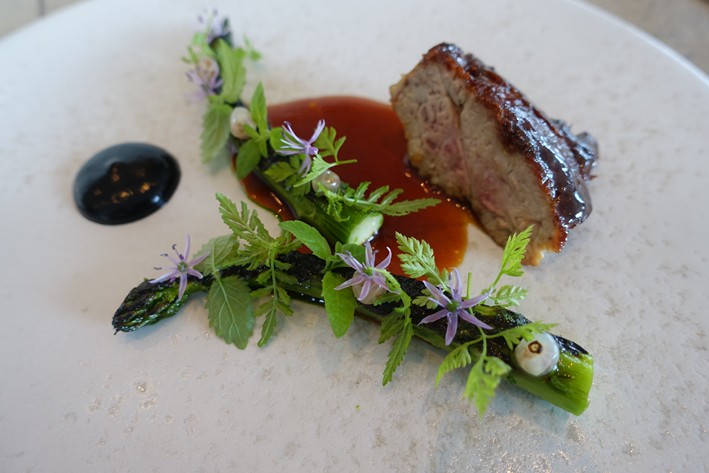
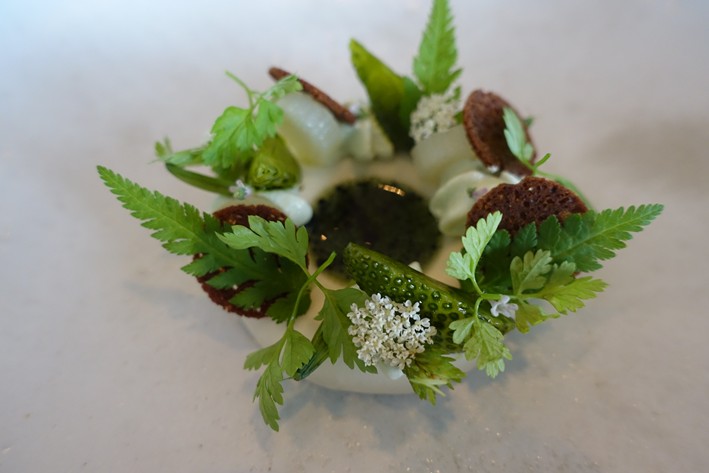
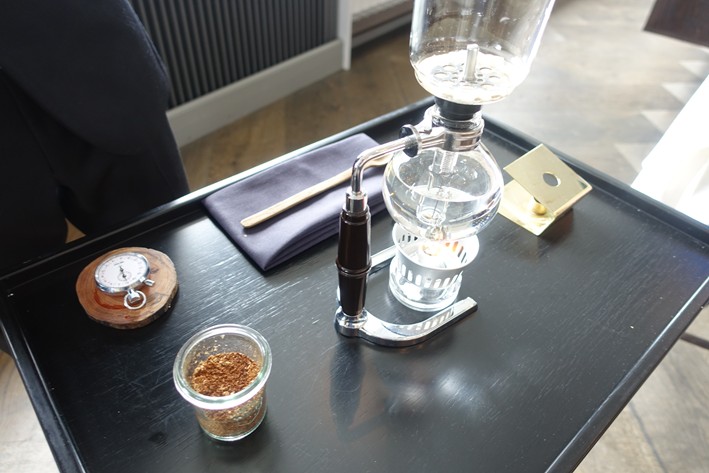
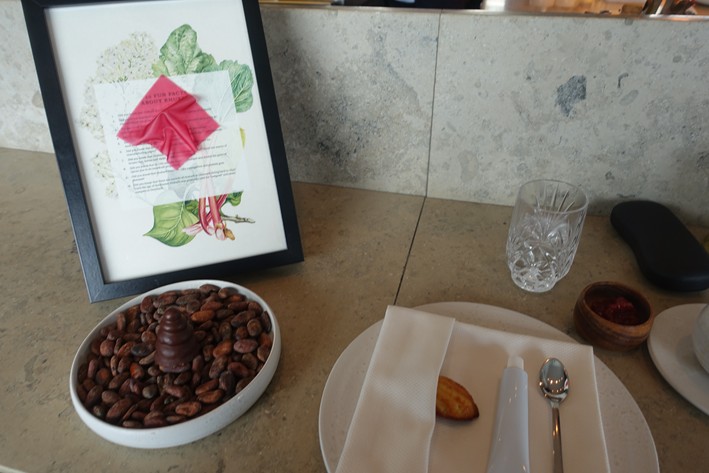
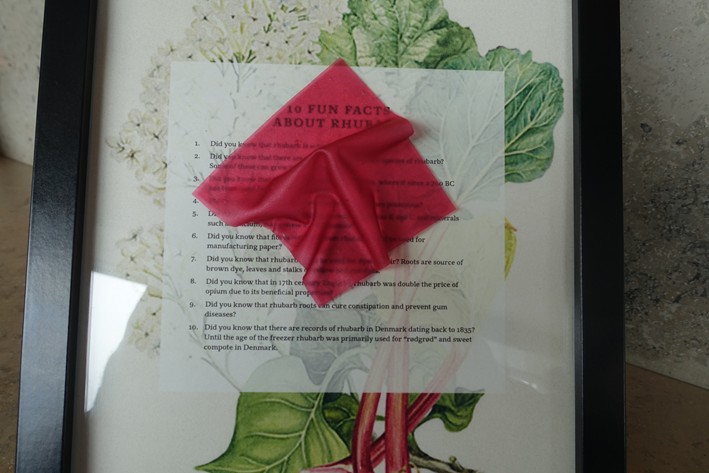
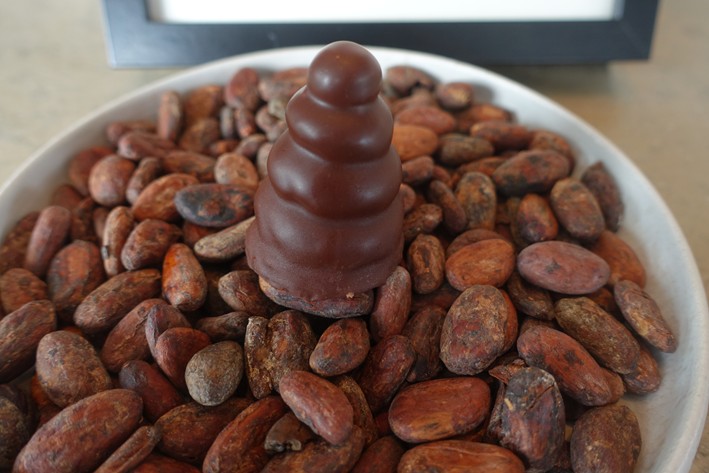

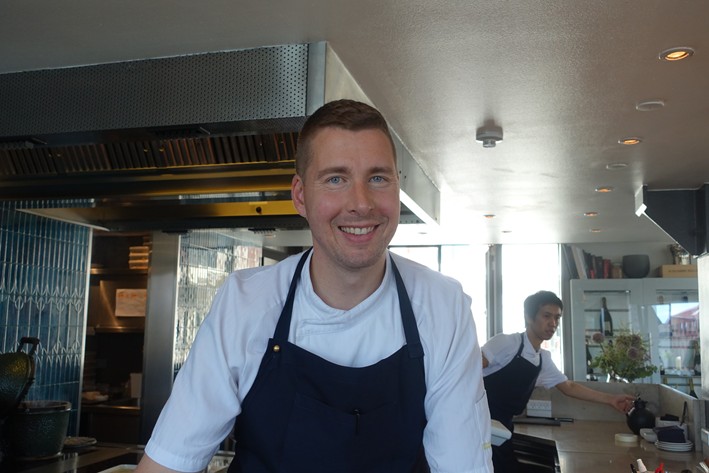

Add a comment
Thank you for submitting your comment, this will be checked and added to the website very soon.
User comments